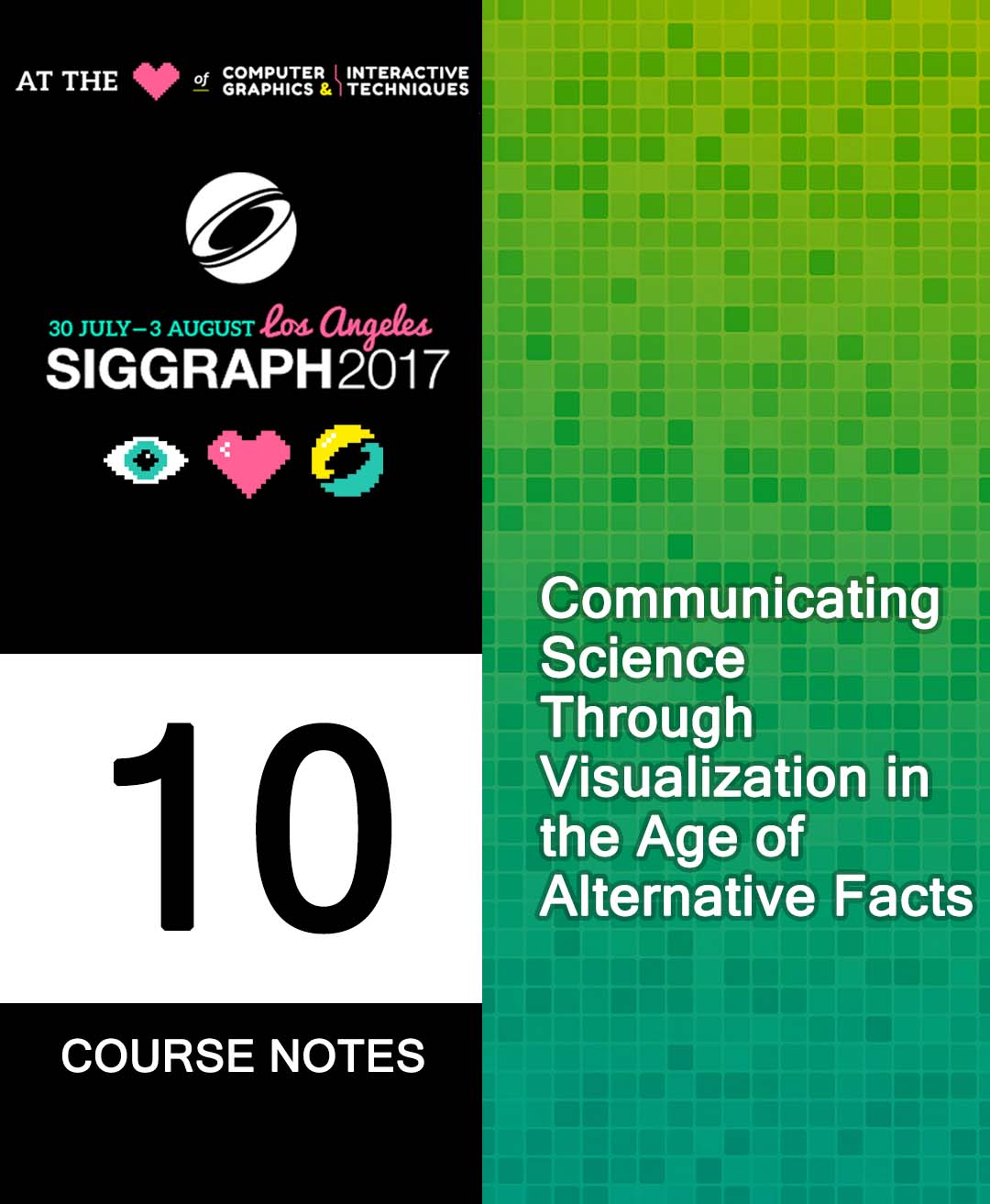“Communicating Science Through Visualization in the Age of Alternative Facts” by Christensen and Stone
Conference:
Type(s):
Title:
- Communicating Science Through Visualization in the Age of Alternative Facts
Organizer(s):
Presenter(s)/Author(s):
Entry Number: 10
Abstract:
Prerequisites
None.
Level
Introductory
Who Should Attend
Artists interested in visualizing scientific data and researchers interested in visualizing computational simulation data.
Description
Scientific visualization for public education is newly relevant in a world where the media landscape often incentivizes misinformation and encourages misinterpretation. The ACM SIGGRAPH community has brought artists and academics together for decades, and has the unique ability to engage public audiences like never before by demystifying complex scientific concepts through cinematic scientific visualization.
The Advanced Visualization Laboratory at the National Center for Supercomputing Applications is a research team that specializes in creating high-quality cinematic scientific visualizations of supercomputer simulations for public outreach. The team works with scientists, film producers, and education experts to create virtual tours through astrophysics, earth sciences, molecular biology, and other domains for high-resolution screens, IMAX theaters, and digital fulldome venues. Films that contextualize cutting-edge computational research with a story and visual effects help audiences build a foundational understanding about complex science concepts.
This course thoroughly examines the process of creating cinematic scientific visualizations with professional visual effects tools. It explains the challenges of representing data accurately while making it not only approachable, but also beautiful and compelling to experts and non-experts alike. It summarizes the importance of interactive exploration of data in a virtual environment and performed cinematography in that environment. It explains how artists can leverage tools from the computational-science communities and the necessity of building custom data-translation software. It demonstrates explanatory geometry like streamtubes and field lines, manipulation and registration of correlated datasets, and design strategies for meaningful scenes. It presents arguments for and against visualization approaches like data interpolation and inclusion of illustrative elements. And it clarifies why cinematic scientific visualization is an optimal format for retention of learning objectives and dispelling scientific misconceptions.





